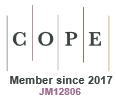Just Accepted
This article has been peer reviewed and accepted for publication. It is in production and has not been edited, so may differ from the final published form.
Exploring perceived and enacted stigma with related factors among gay, bisexual, and other men who have sex with men in Nepal
Abstract
Background: Stigma is multifaceted and widely prevalent among gay, bisexual, and other men who have sex with men (GBMSM). Although perceived and enacted stigma are mostly common and negatively impact GBMSM's well-being, there is limited research in Nepal to guide comprehensive interventions for effective solutions. Thus, the present study aimed to evaluate perceived and enacted stigma related to sexual behavior, as well as the associated factors, among GBMSM in Nepal. Methods: A nationwide cross-sectional study was conducted online among 842 participants between April and May 2024. Neiland’s Sexual Stigma Scale was employed to assess perceived and enacted stigma related to sexual behavior. The Patient Health Questionnaire-9 and the Sleep Quality Scale were also utilized. Exploratory factor analysis and bivariate and multivariate linear regression analysis were employed in the present study. Results: The mean age of the participants was 27.6 (SD=7.1) years. Over half of the participants (54%-76%) experienced perceived stigma, and nearly half (35%-57%) experienced enacted stigma. Participants who were older (ꞵ:0.06, p-value: <0.01), had previously tested for HIV (ꞵ:0.06, p-value: 0.047), engaged in anal sex in the past 12 months (ꞵ:0.2, p-value: <0.01), or had depressive symptoms (ꞵ:0.3, p-value: <0.01) had higher perceived stigma. Participants who had been to sex parties or group sex in the past 12 months had lower perceived stigma (ꞵ: -0.09, p-value: 0.021) and higher enacted stigma (ꞵ:0.08, p-value: 0.009). In addition, participants who had concealed their sexual orientation (ꞵ:0.1, p-value: 0.004), had ever engaged in chemsex (ꞵ:0.07, p-value: 0.024), had reported transactional sex (ꞵ:0.08, p-value: 0.009) in the past 12 months, or reported depressive symptoms (ꞵ:0.3, p-value: <0.01) had higher enacted stigma. Conversely, participants with adequate sleep (ꞵ: -0.1, p-value: 0.027) had a lower enacted stigma. Conclusion: Our study showed a substantial presence of perceived and enacted stigma among GBMSM in Nepal. Our findings underscore the need for stigma reduction initiatives and supportive care for GBMSM in Nepal, especially for older individuals and GBMSM who were engaged in chemsex or group sex or suffer from depression, to promote an LGBT-friendly community.
SH25031 Accepted 11 July 2025
© CSIRO 2025



